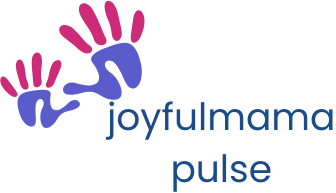Table of Contents
ToggleWhen it comes to creating families, fostering and adoption are two incredible paths, each with its own unique rewards and challenges. Imagine being a superhero for a child in need, swooping in to provide love and stability, whether it’s for a short time or forever. While fostering lets you play the role of a temporary guardian, adoption is like finding that perfect pair of socks—cozy, warm, and here to stay.
Understanding Fostering
Fostering involves temporarily caring for children in a safe, supportive environment. This option focuses on providing children with a nurturing home while working toward reunification with their biological families or finding permanent placements.
Definition of Fostering
Fostering refers to the process of providing a temporary home for children unable to live with their biological parents. This arrangement serves children from various backgrounds, often due to abuse, neglect, or family challenges. Special training equips foster parents to handle diverse situations and meet children’s unique needs. Licensing requirements vary by state, but all programs stress the importance of creating a loving, safe atmosphere for these vulnerable youths.
Goals and Objectives of Fostering
Fostering aims to ensure children’s safety and stability during a transitional period. Placing children in foster care allows professionals to assess family situations and determine the best course of action. Reunification with biological families often stands as the primary goal. When this isn’t possible, helping children find permanent placements becomes essential. Support from foster parents plays a critical role in maintaining children’s well-being while fostering healthier family dynamics. Care strategies include emotional support, educational assistance, and promoting quality development.
Understanding Adoption

Adoption represents a lifelong commitment to provide a permanent family for children in need. This legal process transfers parental rights from biological parents to adoptive parents.
Definition of Adoption
Adoption refers to the legal act of establishing a parent-child relationship between individuals not biologically related. It encompasses various forms, including domestic, international, and step-parent adoption. In each case, a court formally recognizes the adoptive parents as the child’s legal guardians. Permanent placement focuses on ensuring stability and security for the child, creating lasting family bonds.
Goals and Objectives of Adoption
The primary goal of adoption involves providing children with a stable, nurturing environment. Love, support, and security enhance children’s emotional and social well-being. Adoption aims to build strong family connections that offer lifelong benefits. Privacy and respect are critical when navigating this transition. Adoptive parents strive to honor the child’s history while embracing their new family dynamics. In fostering resilience, adoptive families encourage healthy development and integration into the community.
Key Differences Between Fostering and Adoption
Fostering and adoption represent distinct approaches to caring for children. Each carries unique aspects that families should consider.
Legal Implications
Fostering typically involves a temporary arrangement. Legal custody often remains with the biological parents or the state while the child is in care. This arrangement means foster parents must navigate regulations and guidelines set by child welfare agencies. Adoption, on the other hand, creates a permanent legal relationship. Adoptive parents assume full legal rights, and the child’s previous ties dissolve. This shift in legal status provides a sense of responsibility and security for the child in an adoptive family.
Emotional Considerations
Fostering emphasizes support during a transitional phase. Foster parents focus on nurturing the child, creating a safe environment, while often preparing for their return to biological families. Strong emotional connections are vital, yet they may be temporary. Adoption involves a deep, lasting bond from the outset. Adoptive parents commit to the child’s future, fostering stability and emotional growth. Understanding the child’s history is crucial for adoptive families to support their emotional well-being and promote resilience.
Duration of Commitment
Fostering generally lasts until a resolution is reached. Duration can vary, with some placements occurring for weeks and others extending for years. Uncertainty often accompanies this commitment, as foster families adapt to changes. Adoption establishes a lifelong commitment from the start. Families create lasting connections, providing permanence and stability. Emotional investment remains essential in both paths, with different levels of commitment marking each journey.
Benefits of Fostering
Fostering provides numerous advantages for both children and foster families. One significant benefit includes the opportunity to offer a nurturing environment during critical transition periods. Functional familial and emotional support is crucial for children facing instability.
Foster parents receive specialized training to address diverse needs effectively. This training equips them with skills to handle trauma, behavioral issues, and emotional distress. They become pivotal figures in a child’s life, promoting healing and resilience.
Fostering also allows individuals to make a difference in their community. By providing care to a child, they actively participate in changing a life for the better. Developing strong relationships with children in need fosters empathy and understanding.
In addition, fostering can bring significant personal growth for the foster parents involved. Facing challenges while caring for a child can enhance patience, compassion, and adaptability. These experiences often lead to a rewarding sense of accomplishment and fulfillment.
Moreover, fostering provides flexibility that adoption does not. Many foster placements can last from a few weeks to several months, adapting to each child’s unique situation. This temporary commitment allows families to explore their capacity for caring without the long-term obligations tied to adoption.
Lastly, fostering creates an opportunity for reunification. Reunifying children with their biological families is a crucial goal, allowing them to maintain connections with their roots. Working towards reunification can be rewarding and fulfilling for foster parents who support this process.
Benefits of Adoption
Adoption offers numerous long-term advantages that significantly enhance the lives of children and families. One primary benefit includes providing children with a permanent home, ensuring they grow up in a stable and loving environment. Stability fosters emotional security, allowing children to thrive and develop healthy attachments.
Emotional support remains vital in the adoption process. Adoptive families build strong bonds that encourage trust and resilience. These relationships enable children to feel valued and accepted, contributing to their overall sense of belonging.
Another vital aspect involves access to resources and opportunities. Many adoptive families prioritize their children’s education, ensuring they receive the best learning opportunities. Dedicated support systems often include counseling services, which address any emotional or psychological challenges that arise.
Adoption also facilitates a sense of identity. Children who are adopted often explore their backgrounds and histories, which can foster a deeper understanding of themselves. Respecting cultural heritage and family connections nurtures this journey of self-discovery.
Moreover, adoptive families often benefit from community support systems. Engaging with local adoptive parent groups or organizations offers families invaluable resources. These connections provide networking opportunities, fostering friendships and shared experiences among families navigating similar paths.
The legal aspects of adoption provide security for both children and families. Legal recognition establishes a permanent parent-child relationship, ensuring rights and responsibilities are clear. This permanence contributes to stability, reducing uncertainties for everyone involved.
Ultimately, adoption represents a lifelong commitment that brings joy, love, and fulfillment to both the child and the family. This meaningful commitment transforms lives, creating lasting family bonds that enrich the community as a whole.
Choosing between fostering and adoption involves weighing unique rewards and challenges. Both paths provide opportunities to make a significant impact in a child’s life. Fostering offers the chance to support children during critical transitions while maintaining connections with their biological families. It allows for personal growth and community engagement.
On the other hand, adoption establishes a permanent and loving family environment that promotes emotional security and belonging. It fosters deep connections that last a lifetime. Ultimately, whether one chooses to foster or adopt, both avenues contribute to creating nurturing spaces for children in need, enriching lives and strengthening communities.





